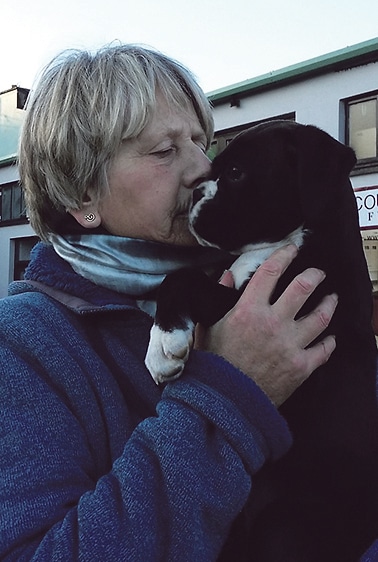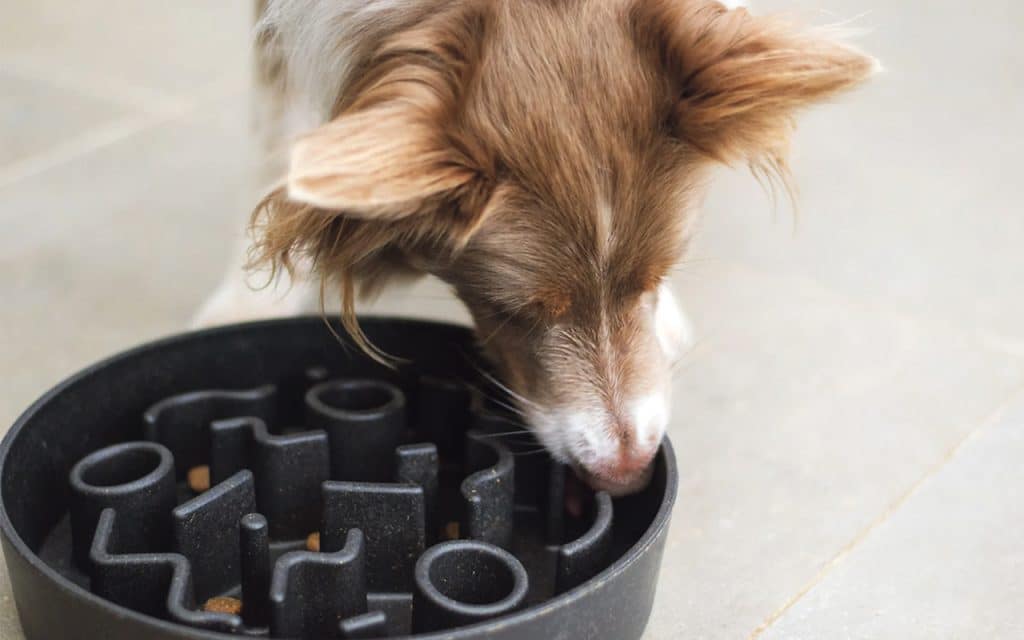
Liz Mahony is an experienced Dog Trainer and Holistic Therapist for all animals. In her monthly column, Liz aims to promote mutual respect between carer and dog. Contact Liz at
corkdogtrainingclasses.com
We’ve all heard that statement many times. But, did you realise it applies to your dog too?
Whenever I make a home visit to a client, one of my first questions will be: what type of food do you feed your dog? Diet can have a major bearing on every aspect of a dog’s life. And the next one is: how does he eat it?
When I was studying canine care, one of the modules dealt with diet and dog foods. If you knew what goes into the mass production of kibble, you probably would never again feed it to your dog. I’d like to think that things have improved over the years but it’s such a big business, I fear it may not be the case.
I do realise that cost may have a lot to do with people’s choices but the most expensive brand isn’t always the best. And the other important decision is to find a well-balanced diet for your dog. Multi-coloured kibble indicates there are additives in it. And we all know what an effect additives can have on human behaviour!
I understand each dog’s dietary needs differ but I would always recommend a grain-free kibble rather than a cereal-based one. Dogs are basically carnivores and herbivores and cereals are not a natural part of their diet. Cereals can have a detrimental effect on a dog causing inflammation of the digestive tract, diarrhoea, skin problems, dry coat, and even behavioural problems.

It’s not difficult to find a grain-free kibble to suit your dog, as there’s so much choice. And then, I recommend adding a small amount of tinned sardines in sunflower oil to each meal to add the necessary supplements.
An advantage of offering your dog grain-free kibble is that it contains few, if any preservatives. We all know that sugar, preservatives, and unhealthy chemicals, can have a negative result on the human diet. It follows that those same ingredients in dog food must have an adverse effect on our pets.
In the same study I did on canine diet, I learnt that tinned food has no real nutritional value for a dog as it’s made from inferior protein sources. It also contains extremely high levels of unhealthy protein in ratio to the meat. One vet likened it to ‘feeding your dog a bought hamburger every day!’
I had a great aunt who advocated ‘thirty-two chews to the mouthful’. That was pretty difficult when eating a piece of cake! However, her aim was to chew the food properly and gain full nourishment from it with the aid of the digestive system.
The same applies with your dog. If he ‘hoovers’ his food, his digestive system doesn’t get the chance to break down the food to give proper nourishment before it is eliminated only half digested, if at all. A ‘slow feeder bowl’ can be a great help here making it impossible to gulp the food without chewing it first in small mouthfuls.
If your dog loves his food but is inclined to consume it in less than a minute, you probably find that he’s always hungry because he’s not had the benefit of the complete digestive process.
This can lead to a hyperactive, restless or nervous dog. I’ve just read an article that suggests that a poor diet can lead to separation anxiety. That makes sense to me if you relate it to human terms. I find that if I ‘grab’ a sandwich, which I might eat with an extra cup of coffee while ‘on the go’, I feel less satisfied than if I sit down to a proper meal and take time to enjoy it. In the former situation, I feel a bit hyper and hungry.
And, finally, there is another dietary option. I’ve left it to the end because many people feel they can’t provide it. It’s the Barf diet or feeding raw meat and bones along with nuts, vegetables and supplements. This is the diet that closely resembles the way a wolf or wild dog would eat. He would catch a rabbit or some such creature, consume it completely and then sample grasses or plants.
I’ve fed my own dogs on raw meat and bones and can attest to their basic good health and glossy coats. I’ve made one modification in that these days I lightly steam the vegetables. My dogs have shown an even greater relish for their food when I do this. I’ve also found that I never have a dog who’s a ‘picky’ feeder. The only time they refuse food is if they’re off-colour.
And the bones clean a dog’s teeth. I’ve never had a dog with bad breath or excessive plaque!
Whatever your dietary preference for your dog, try to ensure that it’s the healthiest for him.


